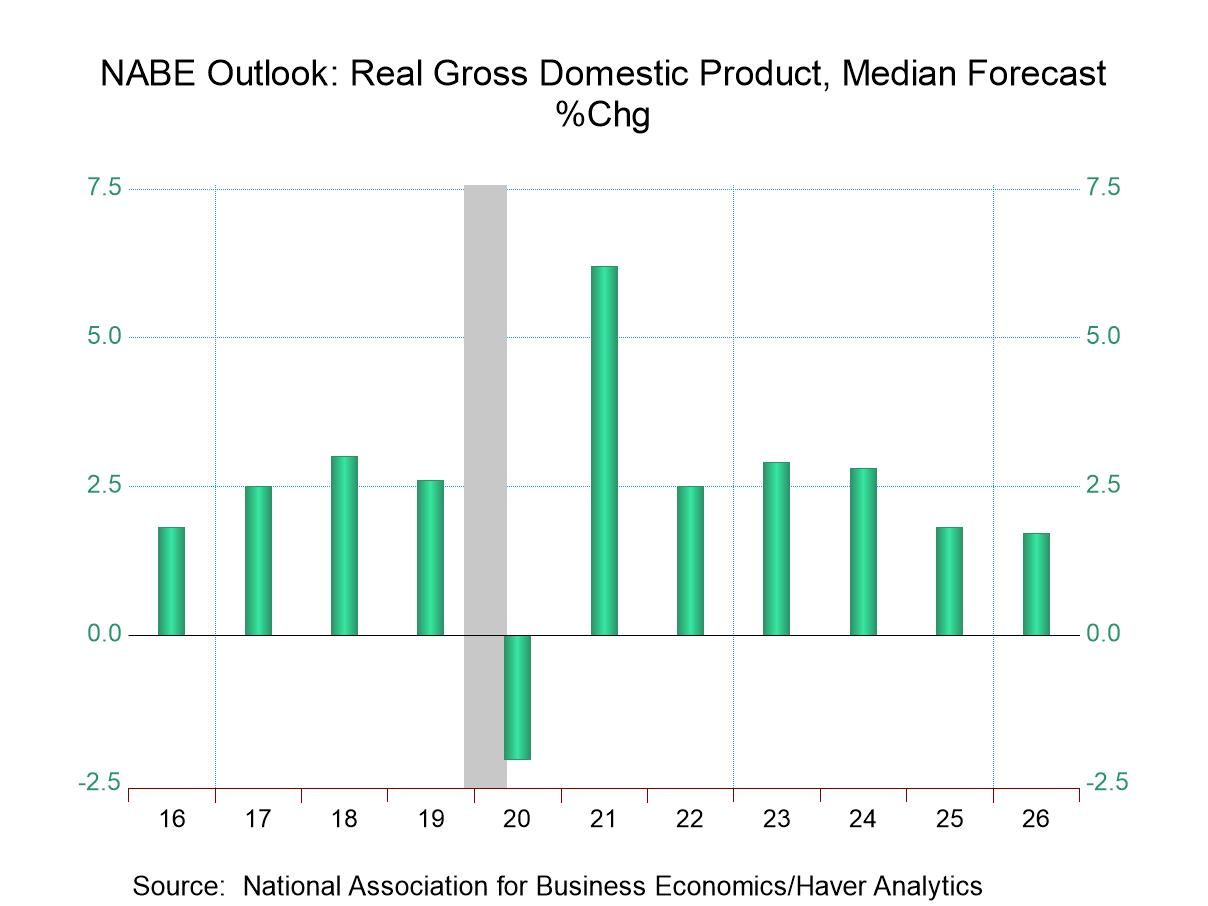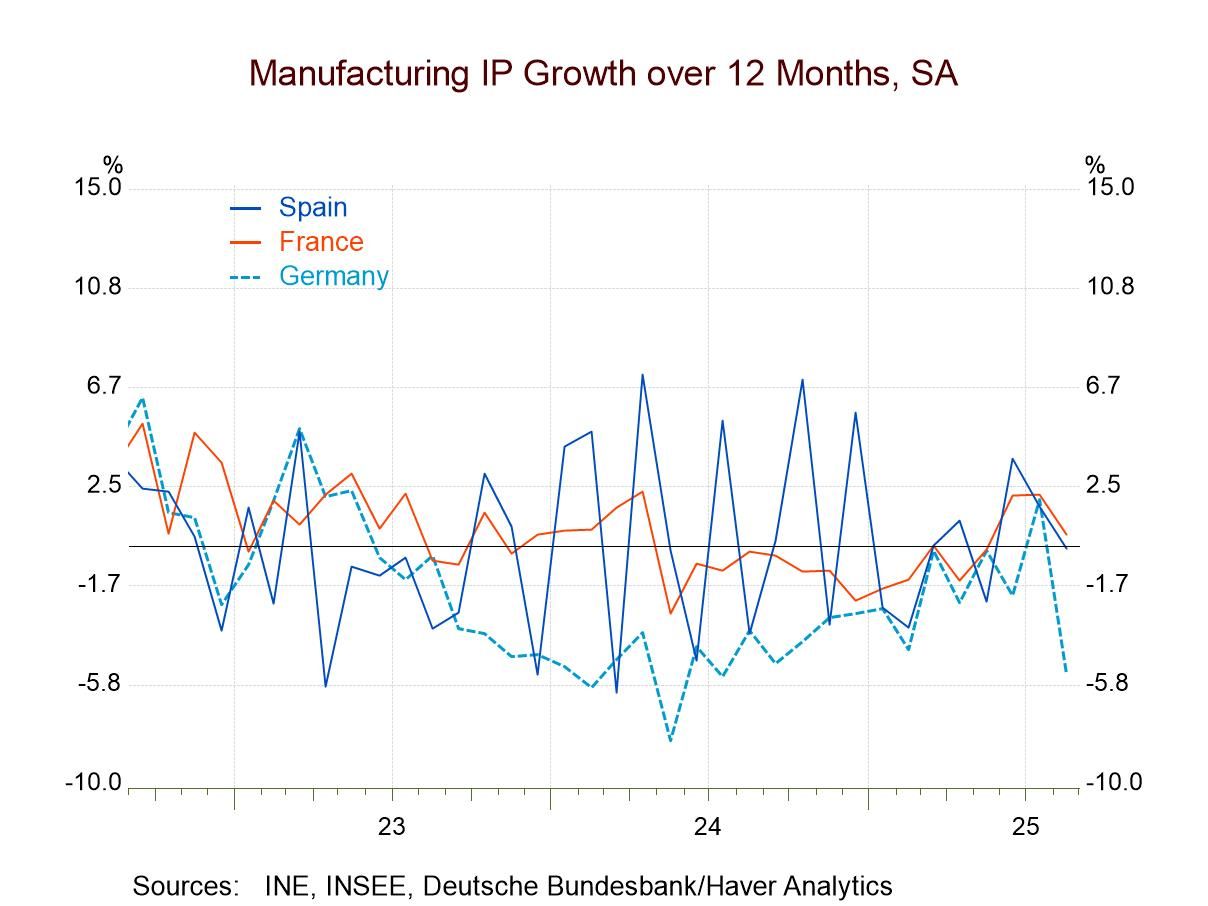 Global| May 07 2004
Global| May 07 2004Canada Labor Market Sustains Gains; Fares Better than U.S.
Summary
Employment in Canada rose by nearly 50,000 in April, rebounding from two monthly declines. The job gain helped push the unemployment rate down 0.2% to 7.3%, the lowest since September 2001. The rate had peaked at 8.0% in December 2001 [...]

Employment in Canada rose by nearly 50,000 in April, rebounding from two monthly declines. The job gain helped push the unemployment rate down 0.2% to 7.3%, the lowest since September 2001. The rate had peaked at 8.0% in December 2001 and again in August 2003. During the 2001 recession, the unemployment rate rose from a low of 6.7%, experiencing a total increase of 1.3 percentage points.
April employment increased most notably in construction, finance, business support services, health care and "other" services. Jobs showed modest rises in manufacturing and several other industries, but declined in wholesale and retail trade and in educational services. The so-called employment rate, employment as a percentage of the population over age 15, rose to 62.5%, maintaining an uptrend that started at the very beginning of 2002.
Canada's labor market has performed better in the last few years than that in the U.S. While it appears that the U.S. is just now breaking out of a disappointingly sluggish employment pattern, jobs in Canada never suffered a protracted decline in the 2001 recession and since then have expanded with some vigor. Correspondingly, the recent unemployment situation in Canada has been "less bad" than in the U.S. While, as noted, the unemployment rate in Canada rose 1.3% during the recession, joblessness in the U.S. surged from 3.9% in early 2000 to a high of 6.3% in June 2003. The rate is higher in the U.S. than in Canada, but it showed much more deterioration during the recession and has since been much later beginning any retreat. This contrasting behavior in the neighboring countries might be seen as an extended payback in the U.S. for its very strong performance in the 1990s, which was not fully shared in Canada. Whatever the explanation, Canada has caught up with the U.S. in its ability to find work for the proportion of the population which desires it.
| Canada: Selected Labor Market Indicators | Apr 2004 | Mar 2004 | Year/Year | 2003 | 2002 | 2001 | 2000 |
|---|---|---|---|---|---|---|---|
| Employment Change | +50K | -13K | 1.7% | 2.2% | 2.2% | 1.1% | 2.6% |
| Employment Rate | 62.5% | 62.4% | 62.3% | 62.4% | 61.8% | 61.2% | 61.4% |
| Unemployment Rate | 7.3% | 7.5% | 7.6% | 7.6% | 7.6% | 7.2% | 6.8% |
| Labor Force Change | +17K | +8K | 1.3% | 2.2% | 2.7% | 1.5% | 1.8% |
| Participation Rate | 67.4% | 67.4% | 67.5% | 67.5% | 66.9% | 66.0% | 65.9% |
Carol Stone, CBE
AuthorMore in Author Profile »Carol Stone, CBE came to Haver Analytics in 2003 following more than 35 years as a financial market economist at major Wall Street financial institutions, most especially Merrill Lynch and Nomura Securities. She had broad experience in analysis and forecasting of flow-of-funds accounts, the federal budget and Federal Reserve operations. At Nomura Securities, among other duties, she developed various indicator forecasting tools and edited a daily global publication produced in London and New York for readers in Tokyo. At Haver Analytics, Carol was a member of the Research Department, aiding database managers with research and documentation efforts, as well as posting commentary on select economic reports. In addition, she conducted Ways-of-the-World, a blog on economic issues for an Episcopal-Church-affiliated website, The Geranium Farm. During her career, Carol served as an officer of the Money Marketeers and the Downtown Economists Club. She had a PhD from NYU's Stern School of Business. She lived in Brooklyn, New York, and had a weekend home on Long Island.





